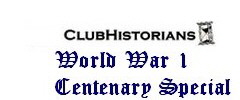|
In the ‘dry’ canteen on the ground floor of Talbot House, there was the simple pleasure of drinking tea from proper cups made with water that did not come out of an old oil can. Local poet Erwin Mortier in his poem about Talbot House expressed it in words I personally find very evocative:
O remember, remember the satin handshake
of teacups, smooth china….
A welcome cup of tea at Talbot House
(Photo: R. Cherrington, November 2014)
In Tubby Clayton’s Ten Tales of Talbot House, we can see a poster (p.12), detailing the ‘Social Side.’ It reads:
Ground Floor- Dry Canteen, Music Room; First Floor- Writing Room, Games Room, Library, Chaplain’s Room: Second Room, Billiard Room (2 tables), Writing Room, Reading and Class Room; the Tea Hall (in the Garden)- Educational Classes of a varied character, whist drives, sing-songs, cinema, lectures.
This list would not look out of place next to details of activities and facilities offered by working men’s clubs back in ‘Blighty.’ The tradition of having a reading room, for example, was strong in the early WMCIU clubs, encouraged by Solly and his supporters. They hoped that club members would experience some self-improvement through reading books and newspapers. ‘Reading Room’ was incorporated into the name of some clubs, emphasising this facility. Having books to share in a WMCIU was important since most members couldn’t afford to buy their own. Even if they could, there was precious little space or peace to read them at home or at work.
The library in Talbot House was built up and eventually stocked around 2,000 volumes. Tubby Clayton wrote: ‘The library grew prodigiously, so that the catalogue was always inferior to the reality.’ There had to be some rules for borrowers, however, and he came up with a novel solution. The rule was that
One Size Fits All
One Website - All Devices
|
